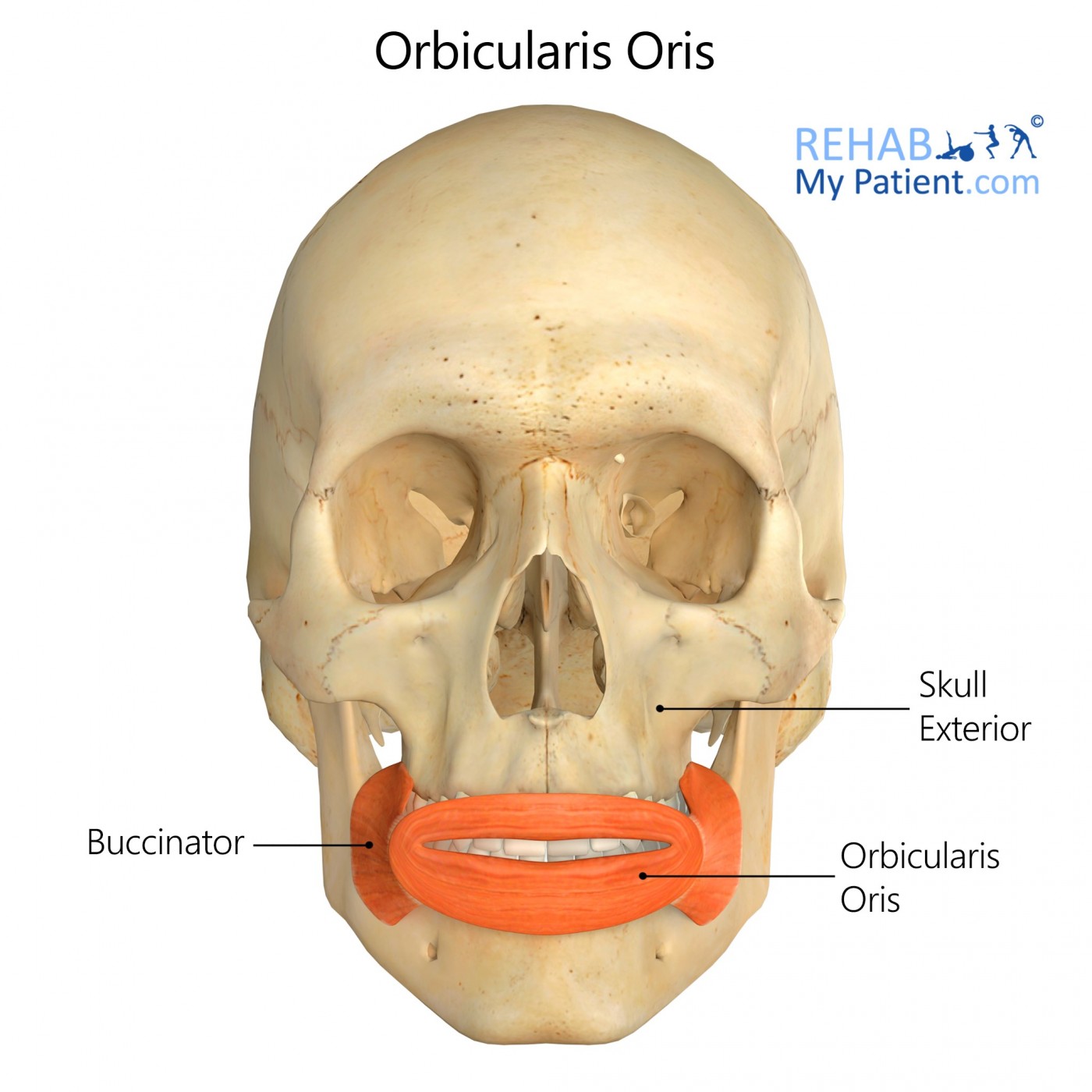
General information
Orbicularis oris are the muscles located above the upper lip and below the bottom lip.
Literal meaning
The little circle muscle of the mouth.
Interesting information
Orbicularis oris are the skeletal muscles that form around the mouth called the kissing muscles because they pucker the lips.
Satchmo’s syndrome is a condition in which the orbicularis oris which ruptures due to overuse and high pressures. This occurs in brass instrument players, but mainly trumpet players. Satchmo’s syndrome includes symptoms of lower lip pain, inability to play in the upper registers, trembling of the lips, or bleeding fissures and crevices of the lips. The main treatment for the syndrome is rest of the muscle. Louis Armstrong (Satchmo) developed the syndrome in 1935 and refrained from playing his trumpet for a year to recover. NSAIDs, like ibuprofen, will help with pain and inflammation. In some cases, surgery may help with the condition to remove the ruptured fibres of the muscle, but many months of rest are still necessary.
Origin
Maxilla
Mandible
Insertion
Skin around the lips.
Function
Puckers the lips.
Nerve supply
Cranial nerve VII.
Buccal branch of the facial nerve.
Blood supply
Inferior labial artery.
Superior labial artery.

Relevant research
In this study, eight patients had deformities of the nasal lining upon the removal of tumours or from other traumas. The new technique of constructing an orbicularis oris myomucosal island flap (OOMMIF) would serve to reconstruct the nasal lining. Traditional methods of correction involved oral mucosal flaps, buccinator musculomucosal flaps, or the facial artery musculomucosal flaps. Disadvantages to these procedures included necrosis or shrinkage of the flap post-surgery, meticulous dissection of facial vessels, and the obstruction of venous drainage. OOMMIF eliminates the disadvantages because there is no need to dissect the facial artery, which means there will be no damage to the facial nerve. There is less risk of necrosis due to the stable blood supply to the island flap. One downside is that a small section of the orbicularis oris needs harvesting. Results for the surgeries showed great results with minor issues. Observations show an asymmetry of the upper lip in one patient, another patient with hypoaesthesia, and another with redness of the flap that went away with time. There was no functional loss of the orbicularis oris in any of the patients. This treatment could not only help with minor nasal lining defects, but may help to correct side wall defects of the nose or conjunctival defects of the lower eyelid.
Kashiwa, K, Kobayashi, S, Honda, T, Kudo, S, Kashiwaya, G, Nasu, W, Yasuoka, T, Fujiwara, H. (2009). “Orbicularis oris myomucosal island flap transfer to the nose”. Journal of Plastic, Reconstructive & Aesthetic Surgery. 62:10, e341-e344.
Orbicularis oris exercises

The pucker
Begin the exercise by standing or sitting with good posture. Pucker the lips with force and hold for ten seconds. Repeat the exercise ten times.

The smile
Begin by standing or sitting with good posture. Press the lips together tightly, place the middle fingers and the corners of the mouth, and pull slightly. Hold the position for ten seconds then repeat ten more times.
Sign Up
Sign up for your free trial now!
Get started with Rehab My Patient today and revolutionize your exercise prescription process for effective rehabilitation.
Start Your 14-Day Free Trial